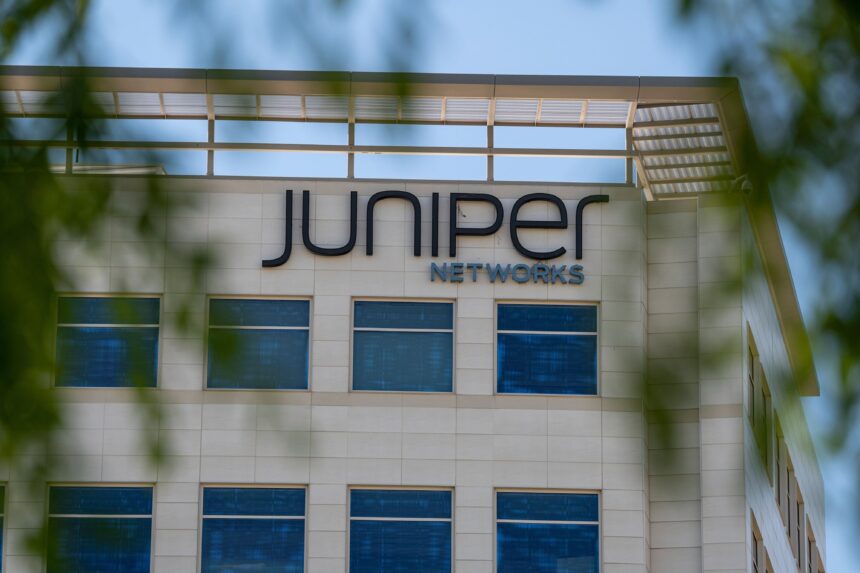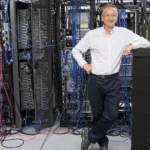(Bloomberg) — Hewlett Packard Enterprise Company agreed to buy Juniper Networks for $14 billion in a move that will expand its presence in networking but raised skepticism from Wall Street.
HPE, a maker of data center hardware, will pay $40 a share in cash for Juniper, the companies said Tuesday in a statement. That price represents more than half of HPE’s $21 billion market value and a 32% premium over Juniper’s closing price of $30.22 on Monday before talks of a deal emerged.
Networking, technology that directs the flow of information between devices and across the internet, will be the new core of HPE, Chief Executive Officer Antonio Neri said in an interview after the agreement was announced. That business line will double in size once the deal is closed, the company said.
HPE said it will finance the purchase with term loans that over time will be replaced “with a combination of new debt, mandatory convertible preferred securities, and cash.” The companies expect the acquisition, which has been approved by both boards, to be completed by late this calendar year or early 2025.
Since Hewlett-Packard was split in 2015 into two companies, HPE has focused on trying to expand lucrative business lines such as selling high-powered computing and cloud services. But the company has struggled to grow at more than about 2% over the past few years. In November, HPE gave a revenue forecast that fell short of analysts’ estimates after reporting a steep decline in server sales.
Juniper, like its bigger rival Cisco Systems, makes networking devices such as routers and switches. The HPE-Juniper combination will disrupt the industry since “there has been only one large vendor,” Neri said, referring to Cisco. “Today we are actually creating a second option – a much more modern option that ultimately customers were looking for.”
Like much of the tech industry, Juniper has touted the potential for new artificial intelligence services to boost growth. Together, the companies will excel in building data centers and running networks for AI-enabled operations, Juniper CEO Rami Rahim said in an interview. Rahim will lead the combined networking business and report to Neri once the deal is closed, the companies said.
The merger will help HPE “fill a gap in its portfolio, expanding its data center and cloud networking presence,” Bloomberg Intelligence analyst Woo Jin Ho wrote Tuesday before the deal was announced.
Many on Wall Street expected Spring, Texas-based HPE to make acquisitions after the company said it would sell its stake in H3C for about $3.5 billion. The agreement marks the first big technology deal of 2024, following the worst year for mergers and acquisitions since 2013. After global deals hit a record of $3.82 trillion in 2021, they fell to $2.17 trillion last year, according to data compiled by Bloomberg.
Shares of HPE were little changed in extended trading. The stock had its worst day since May 2020, falling 8.9% to close at $16.14 in New York following reports the deal was imminent. Some analysts questioned the potential acquisition, saying HPE’s purchase of a legacy tech company like Juniper could complicate its growth initiatives. Others called out the risks of an increasing debt load or overlapping product lines leading to customer confusion.
“Juniper has long been a struggling asset with share losses/high exposure to the service provider market, and it is unclear how simple integration will be, given different software stacks,” Toni Sacconaghi, an analyst at Sanford Bernstein, wrote. Juniper’s stock fell 7.8% in 2023 after an 11% drop in 2022.
Juniper shares were little changed in extended trading after the agreement was announced. Earlier, the stock jumped 22% — its best day since January 2004 — to close at $36.81. Analysts estimate annual revenue at the Sunnyvale, California-based company will decline 2% to $5.51 billion in 2024. Juniper had 11,506 employees as of Sept. 30.
JPMorgan Chase and Qatalyst Partners served as HPE’s financial advisers. Goldman Sachs Group served as Juniper’s adviser. Neri said the acquisition should be completed within the next 12 months, and he doesn’t expect regulatory reviews to slow it down.




